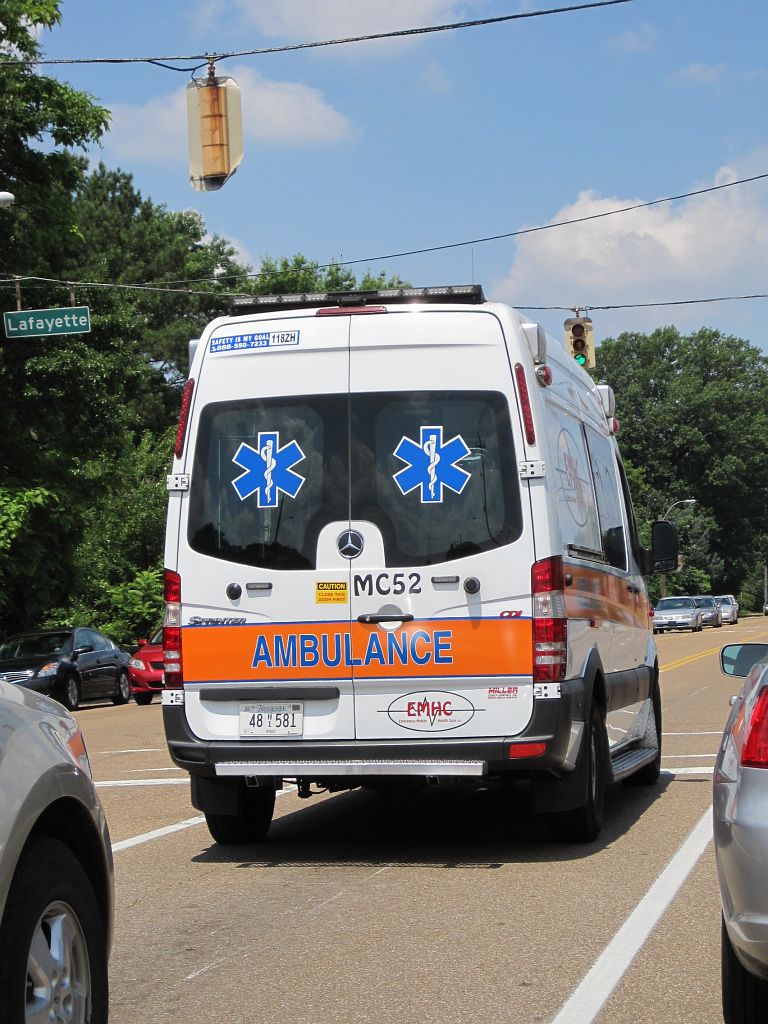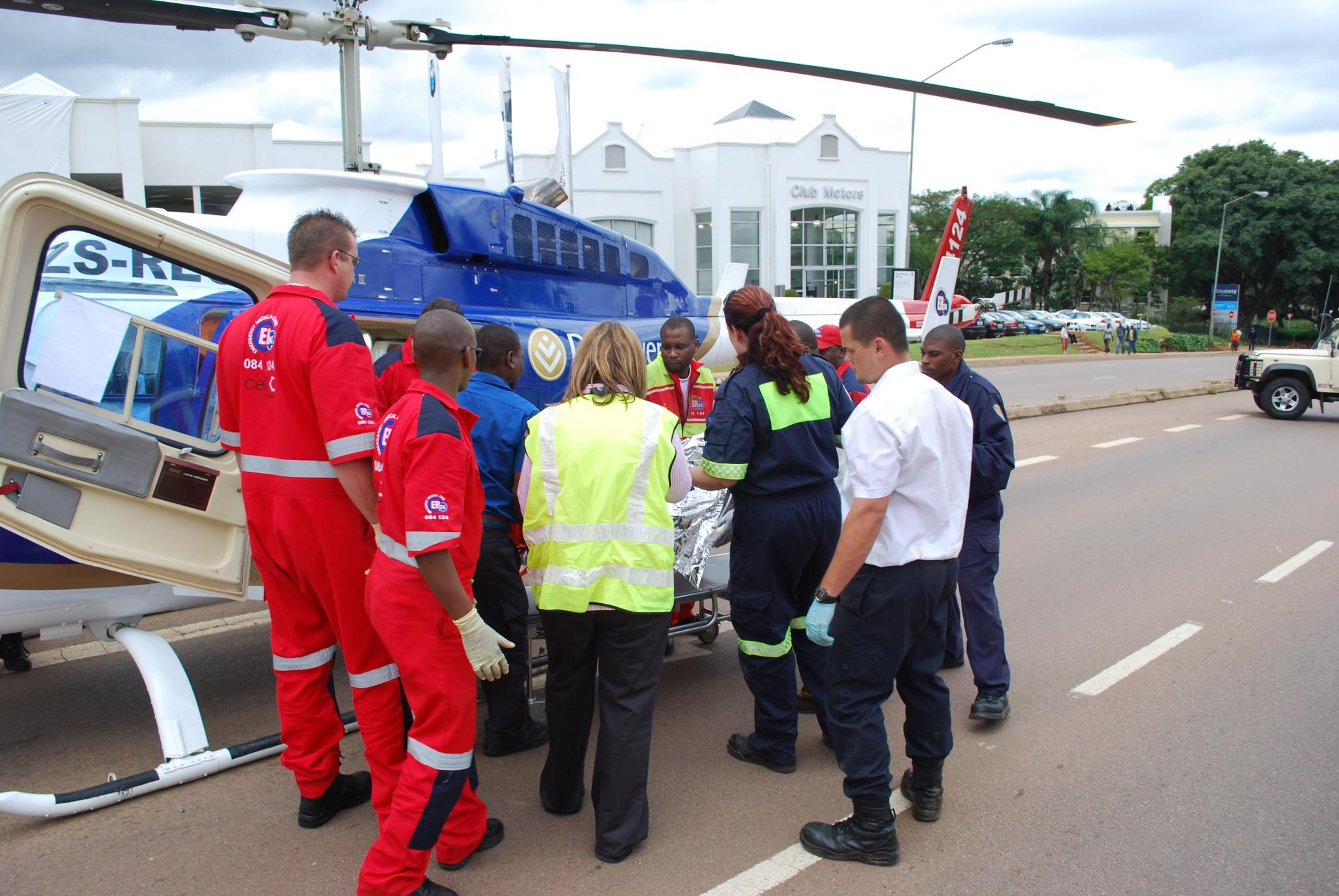The Emergency Medical Services industry is a plucky, hard-driven lot these days. We're the healthcare safety net for every socioeconomic class. When the normal points of entry into the healthcare system fail to catch a disease process or when the unthinkable happens, calling 911 for an ambulance is the best option for most people. In fact, those that truly need us and can't access us mostly die. Those that do access us enter into the most immediate and highly skilled acute care setting currently available. We catch the uninsured who can't manage their chronic conditions through primary care. We catch the immediately injured trauma patients from falls and car accidents. We catch the tired, the poor, and the huddled masses with no one else to turn to. We catch the rich who think that 911 is the most direct route to care in the hospital. We treat the homeless in their boxes on the curbside. We treat the athletes who injure themselves on the field. We treat the uninsured small business owners who were so scared to go to a doctor for fear of the bill that they waited too long and their lives are in danger. We treat the naked drunks swigging tequila straight from the bottle while peeing into their shoe. We treat the scared elderly lady who may have taken too much of her medication regimen. We treat everyone, regardless of their ability to pay, in their time of perceived need.
And we're stretched to our limit and something may have to give.
"Emergency Medical Services" or "EMS" systems are complex organizations made up of multiple players from different disciplines. Everyone knows the title "Paramedic", some know the term "Emergency Medical Technician" or "EMT", and some still occasionally utter the detestable term "Ambulance Driver" relegating today's highly trained and equipped Paramedics to the level of yesterday's pioneers who simply drove really fast in hearses borrowed from the local funeral home. In just about every community in the United States ambulances are just a phone call away. Almost everyone has access to the 911 system and almost everyone knows just who the first people they want to see at their side when the unthinkable happens. No one gives us a moment's thought until that time though, and that may prove deadly as our country's economic woes drag on. Ambulances, with their "duty to act" and care for anyone who calls for them anytime they call for whatever reason, rely on the Fee-for-Service model to pay their bills. Communities are generally mandated by law to provide for ambulance service within their jurisdiction and this creates a problem. The fee-for-service model relies only on income from billing those whom can pay only when the ambulance transports them to a destination. This leaves a large amount of time when the ambulance is in service but not occupied with a call, with at least two crew members on duty, when the ambulance service cannot recoup any fees for its time. Some communities supplement their services with tax dollars; however this model places a disproportionate burden on property-tax payers who demographically are not the ones who most call for ambulance services. The homeless, the transient, and the person just-driving-through-town don't pay those property taxes but are entitled to the same level of service as the tax payers, whether they can pay the fee for service or not. Ambulance services have come to survive on these property tax revenues and insurance payments from those with insurance. While governmental organizations like Medicare and Medicaid do pay a highly discounted rate, usually paying several hundred dollars less than what is billed by the service and usually paying months after the transport occurred, they are not covering the true costs of treating their patients.
Industry experts are forecasting that the current US economy will hit the EMS industry very hard in the coming months. As factories and commercial entities close their doors, the people losing their jobs lose their employer-provided health insurance. This is a double-edged sword, because in addition to the former employees becoming newly uninsured, the shuttered facilities populating the tax plots are not pumping the industrial and commercial tax rates into the coffers that are the trickle of life into the ambulance services. That dwindling tax revenue is the small lifeline that keeps them in-service during the times when they are sitting idle, ready for the next call, or are transporting those who just cannot pay. Combine these facts with the fact that the now-uninsured people will begin to defer primary and preventative medical care until their chronic or non-diagnosed conditions become so severe that they must call an ambulance, placing yet another patient on the stretcher with no possible way to pay the bill.
We have a problem. Paramedics and EMTs have always done spectacular things with very little resources. Unfortunately, it looks like even the most dedicated and talented innovators in the Emergency Medical Services may not be able to solve this problem. Paramedics, the highest level of pre-hospital (or Field) medical provider are already woefully underpaid and in smaller communities, most acutely in the rural areas, they are already working close to and over 100 hours per week in most cases. Paramedics and EMTs have borne the burden of the overtaxed and underfunded EMS systems for the last few decades. By working for low wages and accepting forced overtime as a way of life in order to feed their families, they have kept the doors going up and the trucks going out of ambulance bases throughout the nation. Their dedication, and in my case, an addiction, to their work has kept the rest of us safe. Unfortunately, this tenuous system of depending on the altruistic tendencies of emergency medical providers is being hit by the economic collapse as well. For over a decade, there has been an acute paramedic shortage that has received far less press than the nursing shortage. In good part, this is caused by the long amount of schooling required to gain entry into the profession coupled by the low pay and long hours that forces the young, idealistic new paramedics to seek other careers that pay more substantially when they age and acquire things like families, mortgages, and responsibilities. Those that stay have gained a pseudo benefit from this shortage from the upward pressure on wages given by the law of supply and demand as well as the ample opportunities for them to take on second and third jobs (I have three).
However, that short-lived benefit is probably over. EMS professionals work in many capacities, some working only in part-time or "as needed" positions, and some working in strictly volunteer roles. Former full-time EMS professionals who left the profession for greener pastures seem to have been keeping their certifications up-to-date by completing the required continuing education. These people view their EMS licensure as marketable parts of their resumes and as their current non-EMS employers are facing layoffs and/or outright closings, these people are returning to reclaim their jobs in EMS. For the first time in many careers, EMS employers are seeing something they have never before witnessed: More applicants than there are positions. This is a sea change in most EMS organizations. Services have responded by hiring paramedics and EMTs to fill shifts that would regularly be covered by their current employees working built-in overtime. Consequently, the additional hours that the current paramedics depended on to swell their paychecks in place of higher wages have disappeared. Personally, my yearly salary has been halved and I am not alone. Without the upward pressure on wages caused by the former paramedic shortage, our wages will collapse. This puts the already vulnerable paramedics, who have highly-skilled jobs and who have been sacrificing themselves for their communities for years, at a real risk of poverty.
The public is largely unaware of what goes on in the back of an ambulance. An "Advanced Life Support" or "ALS" ambulance is staffed by at least one paramedic and combines the care of an Emergency Room with the care of an Intensive Care Unit. Paramedics have the abilities to administer close to sixty emergency medications, perform limited emergency surgery skills, receive training in and perform the same Advanced Cardiac Life Support skills as physicians, and bring close to the first hour of emergency room care to wherever their patient happens to be. Paramedic training is college level education that takes almost four years of intensive class work to attain licensure and then takes well over one hundred hours of continuing education to maintain per licensure cycle. Basic Life Support, or "BLS" ambulances staffed by EMTs provide life-saving stabilization skills and front-line emergency medications for the most severe of medical emergencies. Both are your best friend when you need them. Most communities have realized cost-savings for little detriment by combining ALS resources with BLS resources, such as by staffing an ambulance with one Paramedic and one EMT, or by sending a Paramedic ambulance out with a BLS first-response unit. There are other models as well. The bigger cities tend to use all ALS resources, with Paramedics on fire apparatus responding with dual paramedic ambulance. While this is the model most favored by the firefighters' union, ongoing research shows that this most-expensive method may actually prove detrimental to patient outcomes. Communities need to become familiar with how their ambulance service is being delivered, the companies or organizations that deliver it, and the capabilities that their ambulances have. A solution that works for one jurisdiction may not necessarily work for another. The public has to get involved because at this point, everything is at stake.
It is important to note that ambulances are not limited only to 911 emergency responses. Paramedics are experts in acute care and are the masters or mobile healthcare. Ambulances, by definition, move patients from point "A" to point "B". These points need not always be from an emergency scene to the emergency room. A good deal of ambulance services provide non-emergency transportation services for patients too weak to travel by any other means. This may be to and from nursing homes for routine appointments, hospital discharges, or even to doctor's appointments as well as for myriad other reasons. In urban areas, entire private ambulance companies use this as their sole mission. In smaller areas, the community ambulance services use these non-emergent transports as revenue generators to supplement their 911 emergency coverage. For the most part, these services are paid for by Medicare and Medicaid as the patients who are sick enough to need an ambulance as their sole mode of transportation are too sick to work and too sick to generate any income or to have insurance. For their part, Medicare and Medicaid do their best to deny and withhold whatever payment they may finally decide to pay and have created labyrinths of paperwork and forms that must be completed perfectly so that they will agree to be billed. Laws also exist to disallow ambulance providers from ever billing the patients directly if Medicare or Medicaid decides not to pick up the tab, leaving the ambulance service to eat the cost of the transport. In my ambulance, I have to obtain four separate signatures from every patient every time so that my employer can either bill the patient or their insurance, or submit the claim to Medicare/Medicaid. Ever try to convince an unconscious patient to sign their name? What about their panicked spouse? The government has placed the same regulations on the ambulances that it has on the hospitals and clinics. However, it doesn't work in the pre-hospital environment. Where a hospital emergency room has the ability to provide clerical staff, I have to tend to my dying patient while convincing them to sign a form.
To answer this crisis, some communities have closed their own services and combined with neighboring communities. Some have privatized public services. Some have, like Columbus, OH have even considered the fallacy of downgrading their entire system from ALS to BLS. While I do not agree with Columbus's proposal, I do agree that communities must seek out the most efficient way to provide EMS services for their community and some of those solutions are privately held. I would strongly caution against simply downgrading the already dismal wages paid to paramedics and EMTs but I would say that the answer may very well lie in asking Paramedics to take on more tasks and different roles. There is something to be learned from the UK model of the "Rapid Response Paramedic" and the "Emergency Care Practitioner". These are specialized and higher-educated paramedics that respond to medical incidents with a higher-level of knowledge and responsibility than their ambulance paramedics. They could be considered the equivalent of our US "Physicians' Assistant" (PA-C) or "Nurse Practitioner" (ARNP). These paramedics respond to the patient's request, perform an assessment and diagnosis, and can refer patients to the most appropriate level of care for their condition. Sometimes the care is an emergent ambulance to an ER (or Accident & emergency) in the UK, sometimes it is a referral to the front of the line for their normal family doctor, and sometimes it is on-scene diagnosis and treatment for their condition. Currently, US paramedics cannot legally diagnose an illness. Even obvious fractures are given "Field Diagnoses" of "probable" fractures, even though they are treated the same way. Studies have shown that paramedics can reliably diagnose the presence of a spinal fracture and an acute heart attack with almost 100% accuracy being documented. Common medical conditions are routinely "field diagnosed" correctly by paramedics and definitive care is provided on scene to those patients, with either the patient signing off "against medical advice" or being given a quick ride to the ER to be "blessed" by the ER physician and quickly discharged to home. I cannot even count how many times I have "sweetened" a diabetic patient with low blood sugar by starting an IV, administering sugar through the IV thereby fixing their immediate problem, and then allowing the patient to sign a refusal of ambulance transport form. It's been in the thousands. In most cases, since I cannot legally "diagnose" the patient's condition, my service cannot bill the patient for the care. The current laws only allow us to bill for transporting the patient to the ER. These treatments are free for the patient and are very expensive for our service.
If paramedics were allowed to make legal medical diagnoses, devise and follow treatment plans, and either "Treat and Release" patients or refer them to more appropriate medical care other than the ER when medically appropriate, they could make a massive difference in the overall cost of healthcare nationwide. The ER is the most expensive form of healthcare. When medically appropriate, it is life saving. However, with more and more people turning to the ER for primary health care, the system is overburdened to the breaking point. If you've ever attempted to seek care at even a mid-size city's ER for a serious but not-life-threatening medical condition, you've experienced the hours-long wait time for care. By allowing Paramedics to diagnose, treat, and determine the most medically appropriate treatment path for patients we could alleviate the congestion, defer minor medical problems to less-costly but still appropriate medical care, and fix small problems right on the street. Imagine that an ALS ambulance responds to a 30 something male patient with the common complaint of "difficulty breathing". The paramedics would listen to the patient's lung sounds, take his vital signs, check his blood oxygen level, and would probably even attach the patient to a heart monitor to rule out a cardiac problem. As it stands now, the paramedics would determine the appropriate treatments for the patient and perform them. Imagine that the patient had a simple case of bronchitis. The paramedics might give a breathing treatment and transport the patient to the ER where he would most probably be released with a prescribed inhaler and an appropriate antibiotic. However, if the paramedics could do the same thing in the patient's residence, they would have saved whoever is paying for the patient's medical care thousands of dollars.
This would require some changes in the system that some in the industry will not be comfortable with. First, paramedic education would have to be fundamentally altered to require a degree (which it currently does not) and more classes would have to be added. Secondly, the legal status of the profession would have to be changed. Insurance companies and other payers will have to work with the industry to develop fee-schedules for paramedic care. Laws would have to be changed to alter the paramedics' scope of practice. I believe that it is worth it to realize the immense cost savings and also that insurance companies will jump at the chance to realize these overall savings, even if it means increasing monies paid to ambulance services. Paramedics' responsibilities, and remuneration, would subsequently rise.
I've said it before, and I'll say it again. The economy has challenges in store for the Emergency Medical Services. However, there is a bright spot on the horizon. EMS has languished over the last decade under the control of those with political agendas. The people returning to EMS or coming to full-time EMS that have worked in other private sector industries are bound to bring their various expertise and experience to EMS. I don't believe that they will accept the status quo and will break through the current barriers holding our profession back.
Then we can move about the real work of our profession, which is caring for everyone whenever and wherever they need us.


















No comments:
Post a Comment